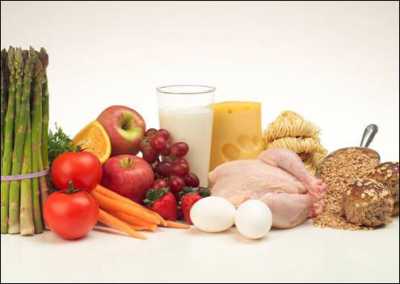
Certain fats should be part of your healthy diet. They can lower your risk of disease. But you should make sure that you’re eating “good” fats instead of “bad” fats.
Why do I need fat in my diet?
- Your body uses fat for energy. It also uses fat to build nerve tissue and hormones and to control inflammation.
- Fat also helps your body absorb vitamins A, D, E and K from the foods you eat.
- Fat calories turn into body fat more easily than carbohydrates or proteins.
- Fat in your diet can confuse your appetite, so you can't tell when you are full.
- Some fats also raise your total cholesterol and blood pressure, and may increase your risk of some cancers, heart disease and diabetes.
How much is too much?
- Fat contains 9 calories per gram – more than twice the calories of carbohydrates and protein, which have 4 calories per gram. Everyone has different calorie needs.
- Your doctor can help you figure out how many calories you need and how many of these can come from fat.
- If you are overweight, the American Heart Association recommends that you get less than 30% of your total calories from fat.
- So, if your body needs 2,000 calories a day, you can have up to 65 grams of fat each day.
What are the “bad” fats?
Limit or avoid these fats:
- Saturated fat is usually found in animal products, such as meat, poultry, eggs and dairy products such as cheese, cream and whole or 2% milk. Palm, coconut and other tropical oils, as well as cocoa butter, also contain saturated fat. Many snack foods, such as desserts, chips and French fries, are high in saturated fat. A diet high in saturated fats can increase your LDL (“bad”) cholesterol levels and can put you at risk for heart disease.
- Trans fats are a type of hydrogenated man-made fat usually found in processed foods, such as cookies, cakes, doughnuts, crackers, snacks and frozen foods, and in fried food, such as French fries and onion rings. Trans fat is especially bad for you. It lowers your HDL (“good”) cholesterol while raising your LDL (“bad”) cholesterol and triglycerides. All food manufacturers are now required to list trans fat on nutrition labels. However, foods can have up to .5 grams of trans fat per serving and still be labeled trans-fat free. To avoid them completely, check the ingredients list and avoid partially hydrogenated oils.
The American Heart Association recommends that you get less than 7% of your total calories from saturated fats and less than 1% from trans fats. So, if your body needs 2,000 calories a day, you should eat less than 15 grams of saturated fat and less than 2 grams of trans fat.
The good fats
- Monounsaturated fats are found in canola, olive, avocado, and peanut and other nut oils, as well as in legumes (dried beans and peas), olives, seeds, nuts, nut butters and fresh avocados.
- Polyunsaturated fats are found in vegetable oils like corn, sunflower and safflower oil, as well as sesame seeds, sunflower seeds, corn, soybeans, and many other kinds of grains, legumes, nuts and seeds.
- Omega-3 fatty acids are usually found in seafood, such as salmon, herring, sardines and mackerel. They can also be found in flaxseeds, flaxseed oil and walnuts.
Studies have shown that these fats, if used in place of saturated fat, can help you lower your total cholesterol level. Omega-3 fatty acids are especially beneficial—studies have shown that they can also decrease your risk of inflammation or heart attack if you are at risk for heart disease.









0 comments:
Post a Comment
Thanks for visiting, please drop a message if you liked it or you have some suggestions. So that we can improve and provide you better services.